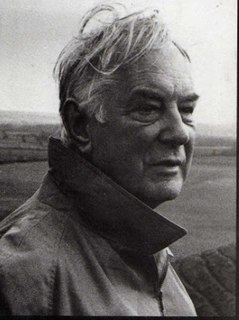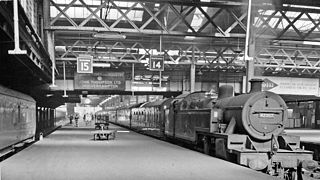Related Research Articles

Poetry is a form of literature that uses aesthetic and often rhythmic qualities of language − such as phonaesthetics, sound symbolism, and metre − to evoke meanings in addition to, or in place of, a prosaic ostensible meaning. A poem is a literary composition, written by a poet, using this principle.
A strophe is a poetic term originally referring to the first part of the ode in Ancient Greek tragedy, followed by the antistrophe and epode. The term has been extended to also mean a structural division of a poem containing stanzas of varying line length. Strophic poetry is to be contrasted with poems composed line-by-line non-stanzaically, such as Greek epic poems or English blank verse, to which the term stichic applies.

Marianne Craig Moore was an American modernist poet, critic, translator, and editor. Her poetry is noted for formal innovation, precise diction, irony, and wit.
The Sapphic stanza, named after Sappho, is an Aeolic verse form of four lines. Originally composed in quantitative verse and unrhymed, since the Middle Ages imitations of the form typically feature rhyme and accentual prosody. It is "the longest lived of the Classical lyric strophes in the West".
Terza rima is a rhyming verse form, in which the poem, or each poem-section, consists of tercets with an interlocking three-line rhyme scheme: The last word of the second line in one tercet provides the rhyme for the first and third lines in the tercet that follows. The poem or poem-section may have any number of lines, but it ends with either a single line or a couplet, which repeats the rhyme of the middle line of the previous tercet.
The Faber Book of Modern Verse was a poetry anthology, edited in its first edition by Michael Roberts, and published in 1936 by Faber and Faber. There was a second edition (1951) edited by Anne Ridler, and a third edition (1965) edited by Donald Hall. The selection was of poems in English printed after 1910, which meant that work by Gerard Manley Hopkins could be included. A later edition was edited by Peter Porter.

Frederick Louis MacNeice was an Irish poet and playwright, and a member of the Auden Group, which also included W. H. Auden, Stephen Spender and Cecil Day-Lewis. MacNeice's body of work was widely appreciated by the public during his lifetime, due in part to his relaxed but socially and emotionally aware style. Never as overtly or simplistically political as some of his contemporaries, he expressed a humane opposition to totalitarianism as well as an acute awareness of his roots.

Geoffrey Edward Harvey Grigson was a British poet, writer, editor, critic, exhibition curator, anthologist and naturalist. In the 1930s he was editor of the influential magazine New Verse, and went on to produce 13 collections of his own poetry, as well as compiling numerous anthologies, among many published works on subjects including art, travel and the countryside. Grigson exhibited in the London International Surrealist Exhibition at New Burlington Galleries in 1936, and in 1946 co-founded the Institute of Contemporary Arts. Grigson's autobiography The Crest on the Silver was published in 1950. At various times he was involved in teaching, journalism and broadcasting. Fiercely combative, he made many literary enemies.
Professor Peter McDonald is a poet, university lecturer and writer of literary criticism. He holds the post of Christopher Tower Student and Tutor in Poetry in the English Language at Christ Church, a college of the University of Oxford.
Jon Howie Stallworthy, was a British literary critic and poet. He was Professor of English at the University of Oxford from 1992 to 2000, and Professor Emeritus in retirement. He was also a Fellow of Wolfson College, Oxford from 1986, where he was twice acting president. From 1977 to 1986, he was the John Wendell Anderson Professor of English at Cornell University.

Letters from Iceland is a travel book in prose and verse by W. H. Auden and Louis MacNeice, published in 1937.
The paradelle is a modern poetic form which was invented by United States Poet Laureate Billy Collins as a parody of the villanelle.

The Earth Compels was the second poetry collection by Louis MacNeice. It was published by Faber and Faber on 28 April 1938, and was one of four books by Louis MacNeice to appear in 1938, along with I Crossed the Minch, Modern Poetry: A Personal Essay and Zoo.

Zoo is a book by Louis MacNeice. It was published by Michael Joseph in November 1938, and according to the publisher's list belongs in the category of belles lettres. It was one of four books by Louis MacNeice to appear in 1938, along with The Earth Compels, I Crossed the Minch and Modern Poetry: A Personal Essay.

"Carrickfergus" is a 44-line poem by Louis MacNeice. It was written in 1937 and first published in book form in MacNeice's poetry collection The Earth Compels (1938). The poem reflects on MacNeice's childhood in Carrickfergus, a large town in County Antrim, Northern Ireland. Although the title of the poem is "Carrickfergus", the text of the poem refers to "Carrick", as the town is known locally and colloquially.

Rugby Football Excursion is a 44-line poem by Louis MacNeice. It was written in 1938 and first published in book form in MacNeice's poetry collection The Earth Compels (1938). The poem recounts an excursion taken by MacNeice from London to Dublin, in order to watch a rugby football match at Lansdowne Road stadium. MacNeice does not specify the occasion, but internal evidence from the poem establishes the match as a rugby football international when England defeated Ireland on 12 February 1938, 36 - 14.

The Sunlight on the Garden is a 24-line poem by Louis MacNeice. It was written in late 1936 and was entitled Song at its first appearance in print, in The Listener magazine, January 1937. It was first published in book form as the third poem in MacNeice's poetry collection The Earth Compels (1938). The poem explores themes of time and loss, along with anxiety about the darkening political situation in Europe following the outbreak of the Spanish Civil War. It is one of the best known and most anthologized of MacNeice's short poems. George MacBeth describes it as "one of MacNeice's saddest and most beautiful lyrics".
"Epilogue For W. H. Auden" is a 76-line poem by Louis MacNeice. It was written in late 1936 and was first published in book form in Letters from Iceland, a travel book in prose and verse by W. H. Auden and Louis MacNeice (1937). MacNeice subsequently included it as the last poem in his poetry collection The Earth Compels (1938). "Epilogue For W. H. Auden" reviews the Iceland trip MacNeice and Auden had taken together in the summer of 1936; the poem mentions events that had occurred while MacNeice and Auden were in Iceland, such as the fall of Seville and the Olympic Games in Berlin.
The Sapphic stanza is the only stanzaic form adapted from Greek and Latin poetry to be used widely in Polish literature. It was introduced during the Renaissance, and since has been used frequently by many prominent poets. The importance of the Sapphic stanza for Polish literature lies not only in its frequent use, but also in the fact that it formed the basis of many new strophes, built up of hendecasyllables and pentasyllables.

Autumn Journal is an autobiographical long poem in twenty-four sections by Louis MacNeice. It was written between August and December 1938, and published as a single volume by Faber and Faber in May 1939. Written in a discursive form, it sets out to record the author's state of mind as the approaching World War II seems more and more inevitable. Fifteen years later, MacNeice attempted a similar personal evaluation of the post-war period in his Autumn Sequel.
References
- Louis MacNeice, The Earth Compels. Faber and Faber, 1938.
- Louis MacNeice, Autumn Journal. Faber and Faber, 1939.
- A New Anthology of Modern Verse 1920-1940, edited by C. Day-Lewis and L.A.G. Strong. London, Methuen & Co., 1941.
- Jon Stallworthy, Louis MacNeice. London: Faber and Faber, 1995.
- Harvey Gross and Robert McDowell, Sound and Form in Modern Poetry. University of Michigan Press, 1996.
- An Exaltation of Forms: Contemporary Poets Celebrate the Diversity of Their Art, edited by Annie Finch and Kathrine Varnes. University of Michigan Press, 2002.